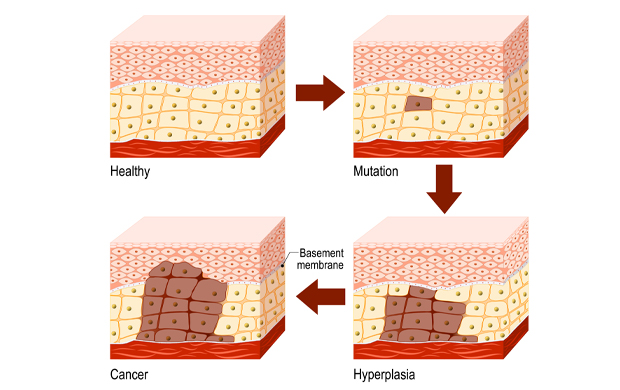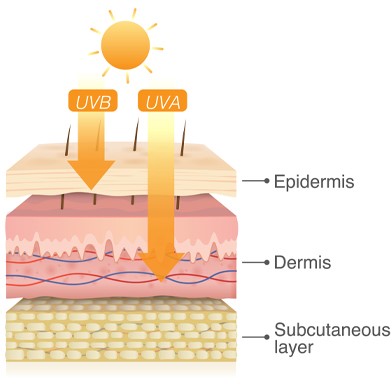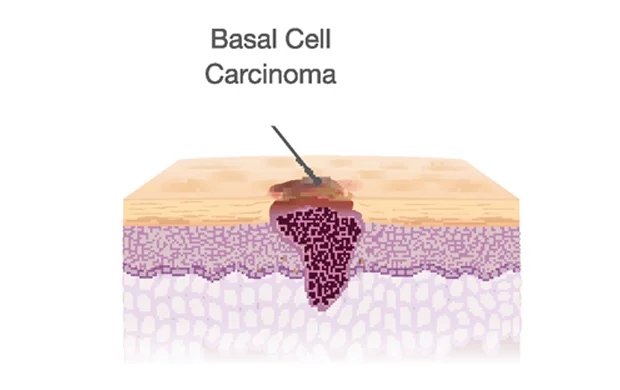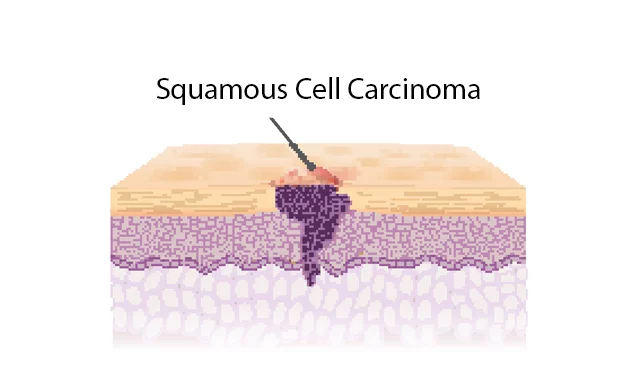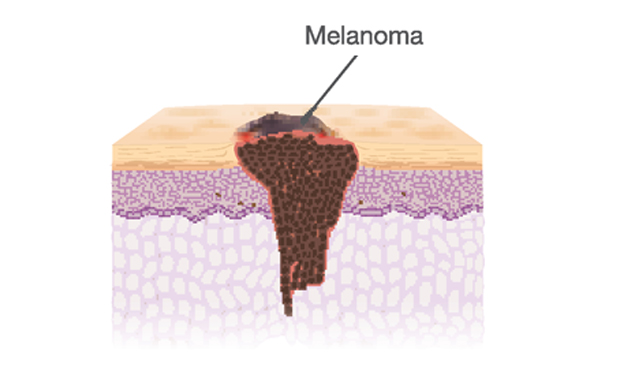Development of Skin Cancer
Skin cancer is an abnormal growth of skin cells. It generally develops in areas that are exposed to the sun, but it can also be formed in places that do not normally get sun exposure.
Development of Cancer
Skin Cancer often develops on areas of the skin that are more exposed to the sun. When the skin cells get damaged by UV-radiation, they begin to grow out of control creating a cluster of what we know as “cancerous cells” or tumor.
A tumor can be malignant, meaning it can grow and spread to other parts of the body, or benign, meaning it can grow but will not spread.
Development of Non-Melanoma Skin Cancer
This cancer has its origin in the epidermis and occurs mainly in older people. There are two variants:
Basal Cell Carcinoma (BCC), occurring when the first cell affected is a basal cell, located in the lower part of the epidermis. These lesions are mostly red or pale in colour and appear as a lump or as dry, scaly area. They grow slowly.
Risk Groups
Skin cancer is linked to sun exposure. Therefore, people who lives in countries with more sunlight exposure or individuals who spend excess time in direct sunlight without protection are at a higher risk for developing skin cancer.
Furthermore, individuals that have light skin and red or blond hair have a much higher risk of developing skin cancer.
References
1) Pustisek N, Sikanić-Dugić N, Hirsl-Hećej V, Domljan ML. Acute skin sun damage in children and its consequences in adults. Coll Antropol. 2010;34 Suppl 2:233-237.


